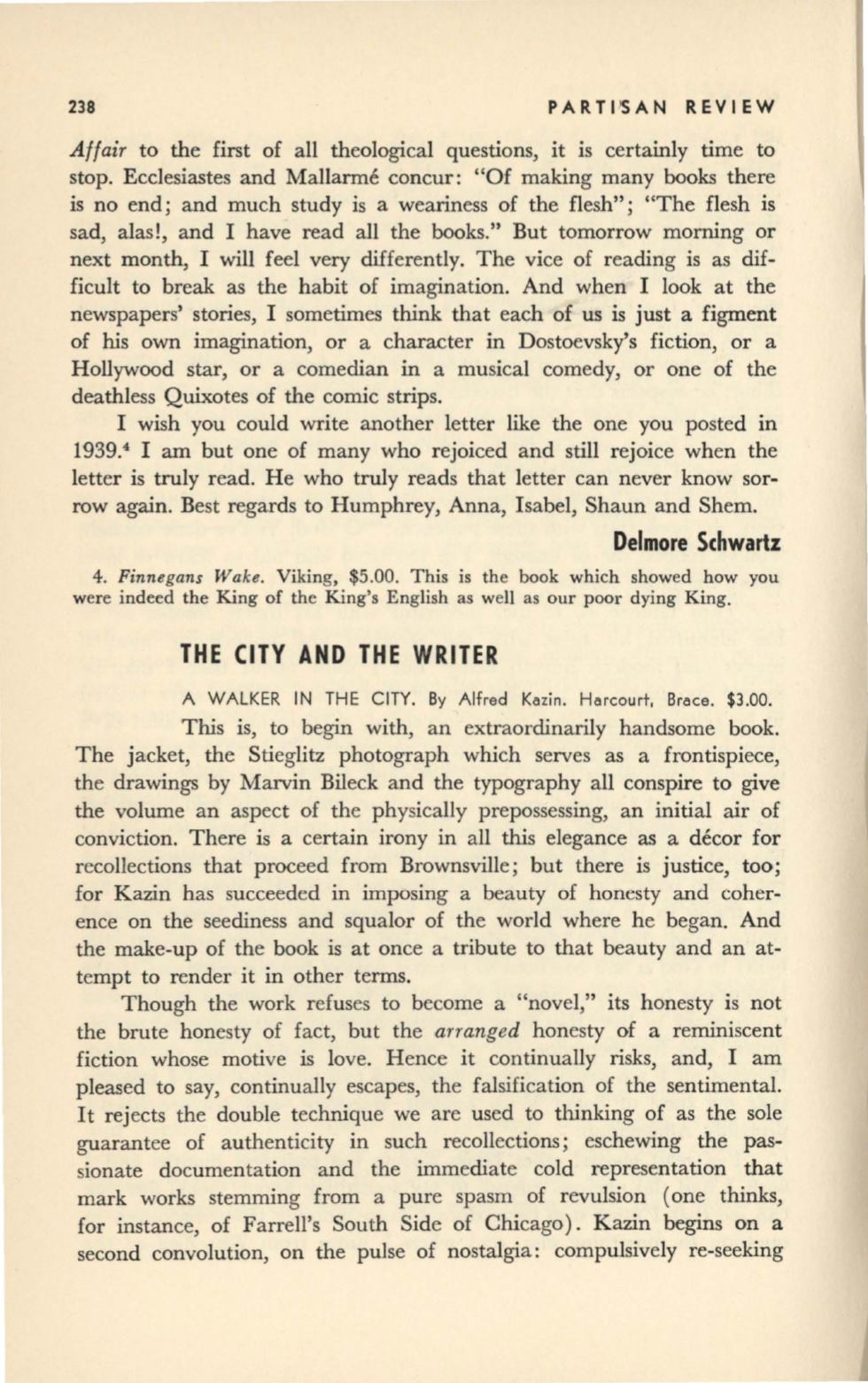
238
PARTI'SAN REVIEW
Affair
to the first of all theological questions, it is certainly time to
stop. Ecclesiastes and Mallarme concur: "Of making many books there
is no end; and much study is a weariness of the flesh"; "The flesh is
sad, alas!, and I have read all the books." But tomorrow morning or
next month, I will feel very differently. The vice of reading is as dif–
ficult to break as the habit of imagination. And when I look at the
newspapers' stories, I sometimes think that each of us is just a figment
of his own imagination, or a character in Dostoevsky's fiction, or a
Hollywood star, or a comedian in a musical comedy, or one of the
deathless Quixotes of the comic strips.
I wish you could write another letter like the one you posted in
1939.
4
I am but one of many who rejoiced and still rejoice when the
letter is truly read. He who truly reads that letter can never know sor–
row again. Best regards to Humphrey, Anna, Isabel, Shaun and Shem.
Delmore Schwartz
4. Finnegans Wake.
Viking, $5.00. This is the book which showed how you
were indeed the King of the King's English as well as our poor dying King.
THE CITY AND THE WRITER
A WALKER IN THE CITY. By Alfred Kozin. Harcourt, Brace. $3.00.
This is, to begin with, an extraordinarily handsome book.
The jacket, the Stieglitz photograph which serves as a frontispiece,
the drawings by Marvin Bileck and the typography all conspire to give
the volume an aspect of the physically prepossessing, an initial air of
conviction. There is a certain irony in all this elegance as a decor for
recollections that proceed from Brownsville; but there is justice, too;
for Kazin has succeeded in imposing a beauty of honesty and coher–
ence on the seediness and squalor of the world where he began. And
the make-up of the book is at once a tribute to that beauty and an at–
tempt to render it in other terms.
Though the work refuses to become a "novel," its honesty is not
the brute honesty of fact, but the
arranged
honesty of a reminiscent
fiction whose motive is love. Hence it continually risks, and, I am
pleased to say, continually escapes, the falsification of the sentimental.
It rejects the double technique we are used to thinking of as the sole
guarantee of authenticity in such recollections; eschewing the pas–
sionate documentation and the immediate cold representation that
mark works stemming from a pure spasm of revulsion (one thinks,
for instance, of Farrell's South Side of Chicago). Kazin begins on a
second convolution, on the pulse of nostalgia: compulsively re-seeking


